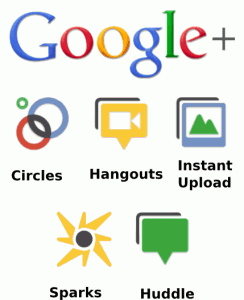 Last summer, when Google+ launched in beta to the uber-geeky technology crowd, the industry was all a flutter.
Last summer, when Google+ launched in beta to the uber-geeky technology crowd, the industry was all a flutter.
Was this an answer to Facebook? Did we finally have a way around the famous opt-out process the giant social network uses? Was Google to be more kind with our private information?
Or was it going to go the way of Buzz and Wave?
What we didn’t expect is a Skype competitor or an incredible driver of search (though that should have been obvious).
But it’s not a social network. Not really.
It’s a phenomenal driver of search. Its (free) video capabilities are strong. And, because it’s a Google product, the search engine giant ranks content higher if it’s promoted through the platform than that on any other social network.
And, at least according to a recent survey from ACSI, users are more satisfied with it than with Facebook…mostly due to the fact that its mobile app reigns supreme.
But mobile isn’t the only reason it’s winning in satisfaction. There are several ways to use the platform to build an audience and increase your search rankings.
- Hangouts. It’s not the end all, be all because a Hangout allows only 10 people at once, but it’s a great way to create a panel discussion, an intimate webinar, instant video conferencing, training or education, live expert interviews, focus groups, or staff meetings. All you need is an Internet connection, a Google+ account, and a computer camera or web cam.
- Crowdsourcing. What if you could ask certain segments of your target audience specific questions and get real and unfiltered feedback? What if you could do it from the comfort of your office or home? Google+ allows you to do this either through Hangouts (see #1) or by simply asking questions on your page and clicking “public” so it goes not only to people in your circles, but to everyone using the site. You can also target the message by clicking “add more people” and selecting specific Circles.
- Podcasting. A couple of weeks ago, the For Immediate Release podcast did their very first Google+ recording. The co-hosts, Shel Holtz and Neville Hobson, invited four guests to record – both audio and video – their weekly podcast While they already have a significant following through iTunes, providing video opened up an entirely different audience segment – those who prefer to watch video vs. listen.
- Audience Targeting. Oh Circles. How we love you. Now we can target specific audiences without boring everyone with all of our content. You can have friends, family, clients, colleagues, prospects, clients, competitors, and more. Just like you segment your email lists (right??), you can do the same with your connections on Google+. Now you can send specific content – promotions, giveaways, white papers, blog posts, webinars, podcasts, and more – to the audiences to which each applies.
- Search, Search, Search! I mentioned this above, but it’s the catalyst to increasing your search, provided you have new and interesting content to share. We have the 80/20 rule: Twenty percent of the content you share on Google+ should be about you – your blog posts, your white papers, your newsletters, your podcasts, your videos, your images – and 80 percent should be about someone else. This means you have to read. A lot. And you have to share what you’re reading in your Google+ page. Most blogs make it really easy for you by providing the +1 button as a share option.
So there you have it. Are you using Google+? What benefits do you see from your time spent there?